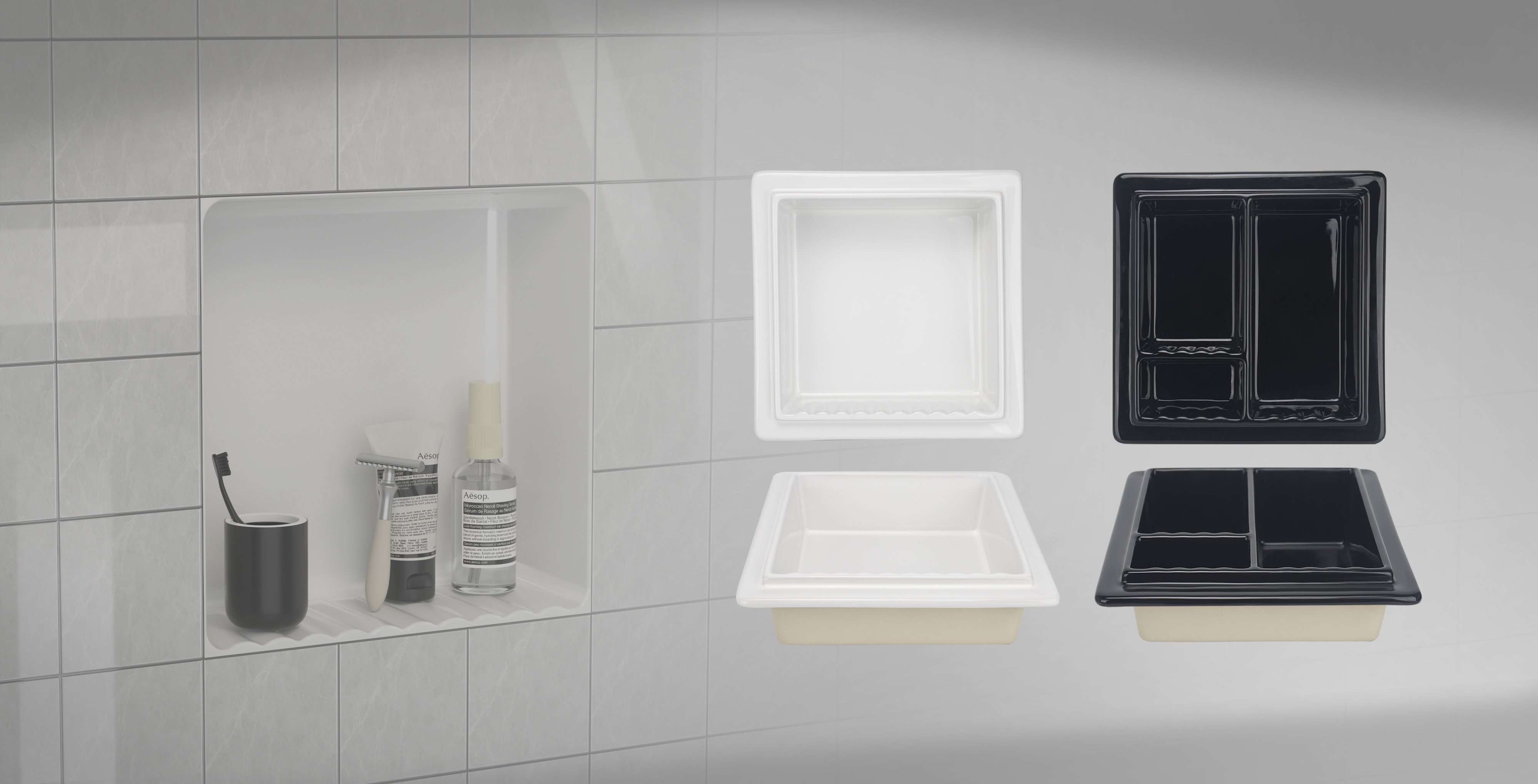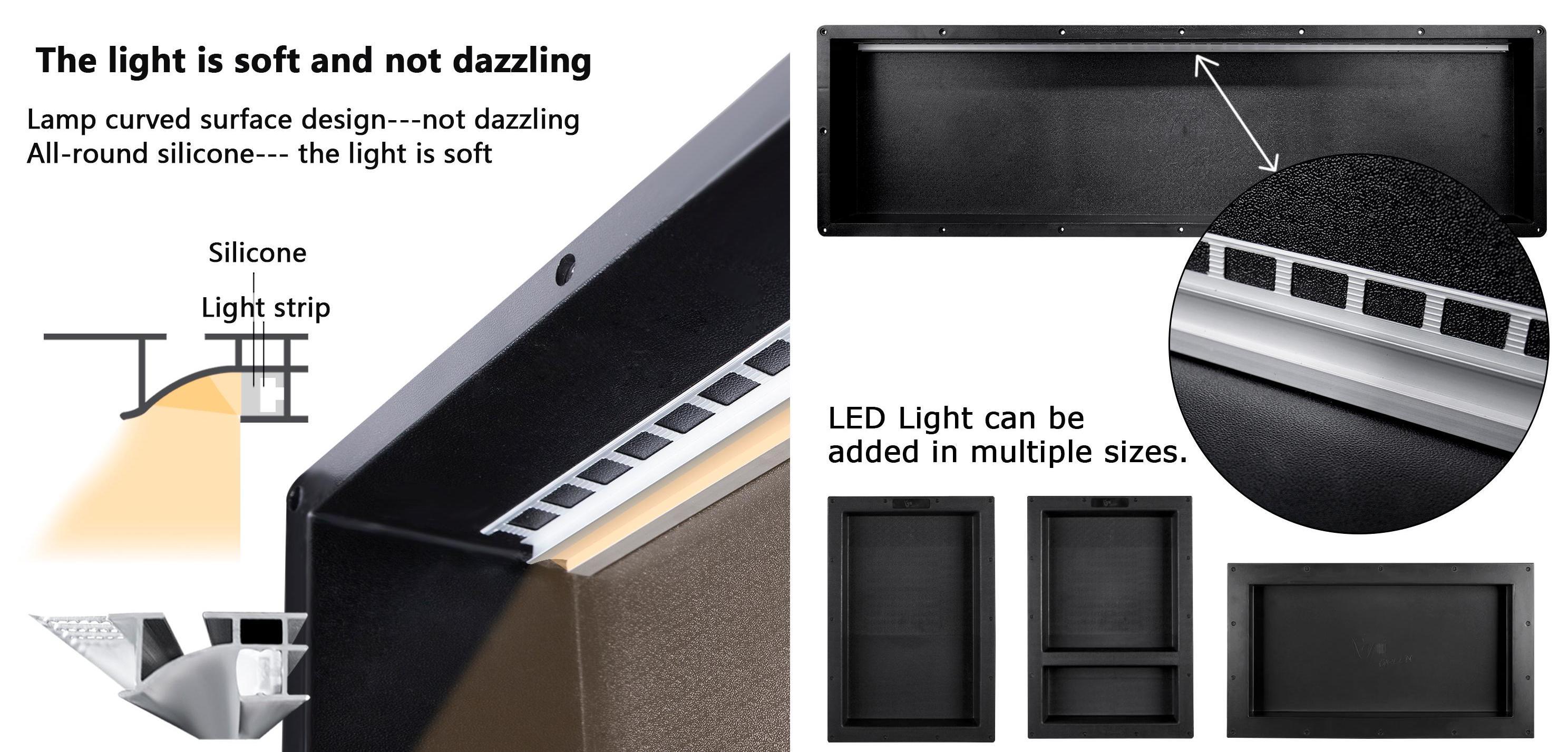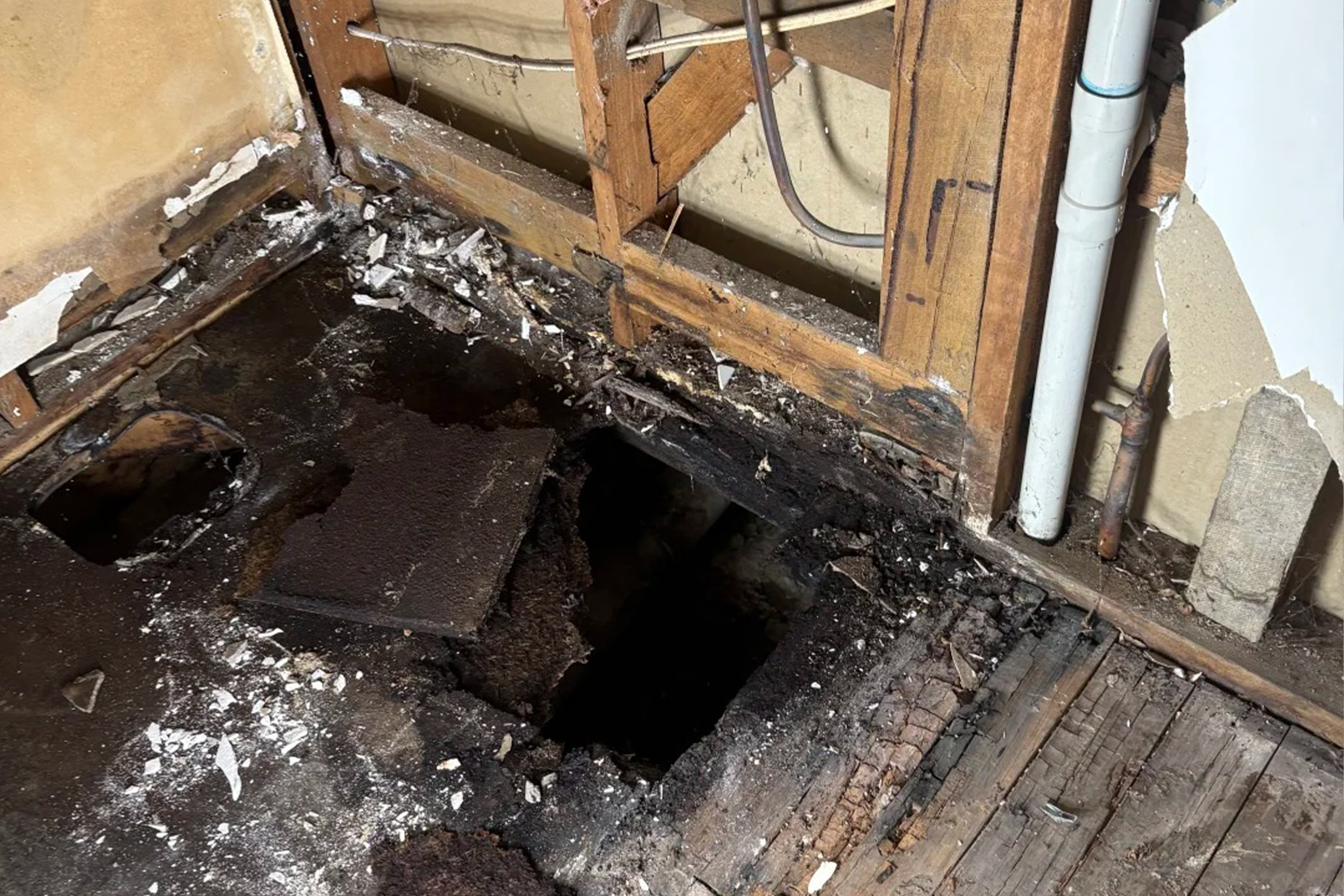A Comparison of Bathroom Niches: ABS Plastic, Ceramic, and Stainless Steel
2025-08-07
Samia
Uni-moulding
ABS plastic bathroom niche,ceramic bathroom niche,stainless steel bathroom niche,bathroom niche maintenance,bathroom niche need to tile,ABS bathroom niche need to tile ,bathroom niche durability,bathroom niche style adaptability,bathroom niche LED ,bathroom niche price North America,bathroom niche market share North America,Shower niche maintenance,Shower niche need to tile ,Shower niche durability,Shower niche style adaptability,Shower niche with LED ,Shower niche price North America ,Shower niche market share North America
A Comparison of Bathroom Niches: ABS Plastic, Ceramic, and Stainless Steel
In bathroom renovations, niches serve as both functional and decorative elements, and the choice of material directly impacts the user experience and aesthetic appeal. Currently, the mainstream options in the market are ABS plastic niches, ceramic niches, and stainless steel niches, each with distinct characteristics in terms of tile requirements, daily maintenance, durability, and more, allowing consumers to make informed choices based on their needs.
1.Tile Requirement: ABS Plastic Niches Need Additional Tiling, While Ceramic and Stainless Steel Ones Don't
When it comes to the need for tiling, there are clear differences among the three types of niches. ABS plastic niches must have tiles installed on their surfaces before they can be used. The plastic frame itself only serves as a base and lacks decorative appeal and the ability to be used directly. Although the tiling process enables it to flexibly match various styles of tiles, creating a unified visual effect with the bathroom walls and highly meeting the needs of contemporary people for personalized DIY, it also increases the installation steps and difficulty, requiring skills in tile cutting, laying, and sealing.

In contrast, ceramic niches and stainless steel niches do not require additional tiling. Ceramic niches, with their integrally formed glazed structure, have a smooth and decorative surface and can be used directly after installation. Stainless steel niches, with their modern-looking metal surfaces, can be put into use after being connected to the wall with metal brackets, without the need for extra decorative steps, making the installation process more straightforward.
2.Daily Maintenance: Stainless Steel Niches Require Cautious Cleaning
In terms of daily use and maintenance, ABS plastic niches (after tiling) and ceramic niches are more hassle-free. Once the plastic base is covered with tiles, the surface is smooth and stain-resistant, and water stains and soap scum can be easily wiped off with water or a neutral cleaner. The dense glaze of ceramic niches is also not prone to dirt accumulation, and there's no need to worry about material damage during cleaning.
Stainless steel niches, however, have obvious drawbacks: the metal surface is prone to water spots and limescale buildup, and using acidic cleaners (such as white vinegar or toilet bowl cleaner) can cause delamination or rusting—a problem that doesn't occur with plastic or ceramic niches. Therefore, stainless steel niches require regular maintenance with specialized metal cleaners, resulting in relatively higher maintenance costs.
3.Durability: Stainless Steel Niches Have a Shorter Lifespan
In terms of durability, the material properties determine the differences among the three. Although the base of ABS plastic niches is made of plastic, the tile protective layer isolates moisture and temperature changes, allowing them to have a service life of 5-8 years. Ceramic niches, with their hard texture formed by high-temperature firing, have excellent corrosion resistance and temperature change resistance, and their service life is generally more than 10 years, even comparable to that of the bathroom itself.
Due to the nature of metal, stainless steel niches are prone to rusting at the joints due to moisture erosion in a long-term humid environment. Especially for ordinary 201-grade stainless steel, obvious damage may occur after 3-5 years of use. Even 304-grade stainless steel, if not properly maintained, has a service life of only 5-7 years, and its overall durability is weaker than the other two types.
4.Style Adaptability: ABS Plastic Niches Offer the Highest Freedom
In terms of adapting to decoration styles in the North American market, ABS plastic niches have a clear advantage due to their "tile customization" feature. Common styles in North American homes, such as farmhouses and coastal vacation styles, can be perfectly matched by choosing tiles of corresponding styles to be laid on the plastic base, achieving a seamless integration with the bathroom walls. They can adapt to various styles, from rough industrial to warm country styles, offering much higher freedom than the other two materials.
Ceramic niches, with their glazed texture and delicate inherent patterns, are more suitable for matching North American popular styles such as cottage style (country house style) and Victorian retro style, which lean towards natural and nostalgic aesthetics. Stainless steel niches, with their sleek metallic look, complement modern minimalist and urban industrial bathroom designs, and are commonly seen in loft apartments favored by young people.
5.Functional Expansion: Ceramic Niches Hardly Compatible with LED Lights
With the trend of smart bathrooms, installing LED lights in niches has become popular, but material properties limit the compatibility of different niches. Due to the strong plasticity of their materials, ABS plastic niches and stainless steel niches can have pre-reserved wire grooves and installation positions in the frame, making it easy to embed LED light strips for ambient lighting.
Ceramic niches, due to their integrally fired rigid structure, are prone to cracking when drilled or grooved. Currently, only a few specially made models on the market support LED light installation, with extremely low popularity, making them unable to meet the needs of young consumers for personalized functions.

6.Price and Market: ABS Plastic Niches Offer High Cost Performance
In the North American market, in terms of price, ABS plastic niches (including tiles) are mostly priced between \(20-50, offering significant cost performance. They are available in major home improvement supermarkets such as Home Depot and Lowe's, and DIY kits including frames, tile adhesive, and sealant are often available. Ceramic niches, mostly imported (from countries such as Italy and China), are priced between \)80-200, with high-end brands even exceeding \(300, and are mainly sold through professional bathroom stores like Ferguson. Stainless steel niches range in price from \)30-100 for 304-grade models, while 316-grade models, with better salt spray resistance, can cost $80-150. Products from local brands such as Moen and Delta are common in the market.
In terms of market popularity, ABS plastic niches, with their low cost and adaptability to mainstream wooden frame walls in North America, account for over 50% of ordinary home renovations. Stainless steel niches, with their modern design and suitability for DIY installation, account for about 30% among young consumers. Ceramic niches, due to their high price and strict installation requirements, have a market share of about 20%, mostly used in mid-to-high-end residences and seaside villas.
In summary, each type of niche has its own strengths: ABS plastic niches are suitable for DIY users pursuing cost performance and style unity; ceramic niches are the first choice for durability and natural styles; stainless steel niches are more suitable for short-term use or tech-style renovations. Consumers can make rational choices based on their renovation budget, style needs, and maintenance capabilities. If you have relevant needs, please feel free to contact us. We have rich experience in the production of ABS plastic niches, ceramic niches, and stainless steel niches, and can provide you with satisfactory products and services.
|
Kind |
ABS Plastic Niche |
Ceramic Niche |
Stainless Steel Niche |
|
1.Need for Tiling |
Yes |
No |
No |
|
2.Installation Difficulty |
High (requires tiling, more steps) |
Low (ready-to-use, direct installation) |
Low (ready-to-use, fixed with brackets) |
|
3.DIY Suitability |
High |
Low |
Medium |
|
4.Daily Maintenance Difficulty |
Low (easy to clean, no special treatment needed) |
Low (easy to clean, no special treatment needed) |
High (avoid acidic substances) |
|
5.Durability |
Medium (5-8 years) |
High (over 10 years) |
Low (3-7 years) |
|
6.Style Adaptability Range |
Wide (can adapt to various styles through tiles) |
Medium (suitable for natural and nostalgic styles) |
Medium (suitable for modern industrial styles) |
|
7.LED Light Compatibility |
High |
Low |
High |
|
8.Price (North American Market) |
Low ($20-50) |
High ($80-300+) |
Medium ($30-150) |
|
9.Market Popularity (North American Market) |
High (over 50%) |
Low (about 20%) |
Medium (about 30%) |
RELEVANT INFORMATION
2025-09-30
Guide to Gasket Materials for Bathroom Drainage: ------Why Silicone Stands Out?
2025-09-26
2025-09-11




